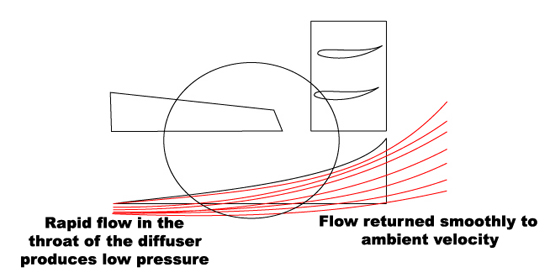If you are not particularly interested in cars, racing or aerodynamics, an explanation of the title might be interesting.
If you are particularly interested in cars, racing or aerodynamics, just keep reading.
First things first. This blog is part of our thesis: the aerodynamic design of a diffuser for a Formula Student vehicle.
Here we will post topics that are related to the used technologies in our thesis in some kind of way.
Having said that, I will now try to explain a diffuser.
What is it and what is it used for?
A diffuser is an aerodynamic device on the underbody of a car used to enhance the airflow underneath the car.
Through this enhanced airflow extra downforce can be created without adding weight to the car itself.
Weight is a bad thing in a race car. The heavier something is, the harder it is to move it. And a race car should move, fast and easily.
Understanding the working principle of a diffuser requires some basic knowledge about aerodynamics.

Diffuser Principle
A diffuser converts the kinetic energy of a flow into a pressure rise. By increasing the velocity of the air underneath a race car, there will be a reduced pressure as well, resulting in a greater difference in pressure between the upper and lower surfaces of the car. Due to this pressure difference, a downforce is generated which gives the car aerodynamic grip so it can corner faster.
This results in better lap times and thus higher scores, which is a good thing of course.
But it is also important that the air flow velocity that exits the diffuser has been slowed down again. Following the aerodynamic laws the pressure will simultaneously rise.
Why is this needed? So the turbulent air exiting the diffuser will smooth out and match the higher pressure while minimizing drag.
Drag is also known as air resistance, this can cause the vehicle to go slower. And this is exactly what we want to prevent.
Both of us are part of the Formula Group T team and our diffuser will be used on this year’s car.
More info about Formula Group T can be found in the ‘About’-tab of this blog and on the website: http://formulagroupt.be/.

